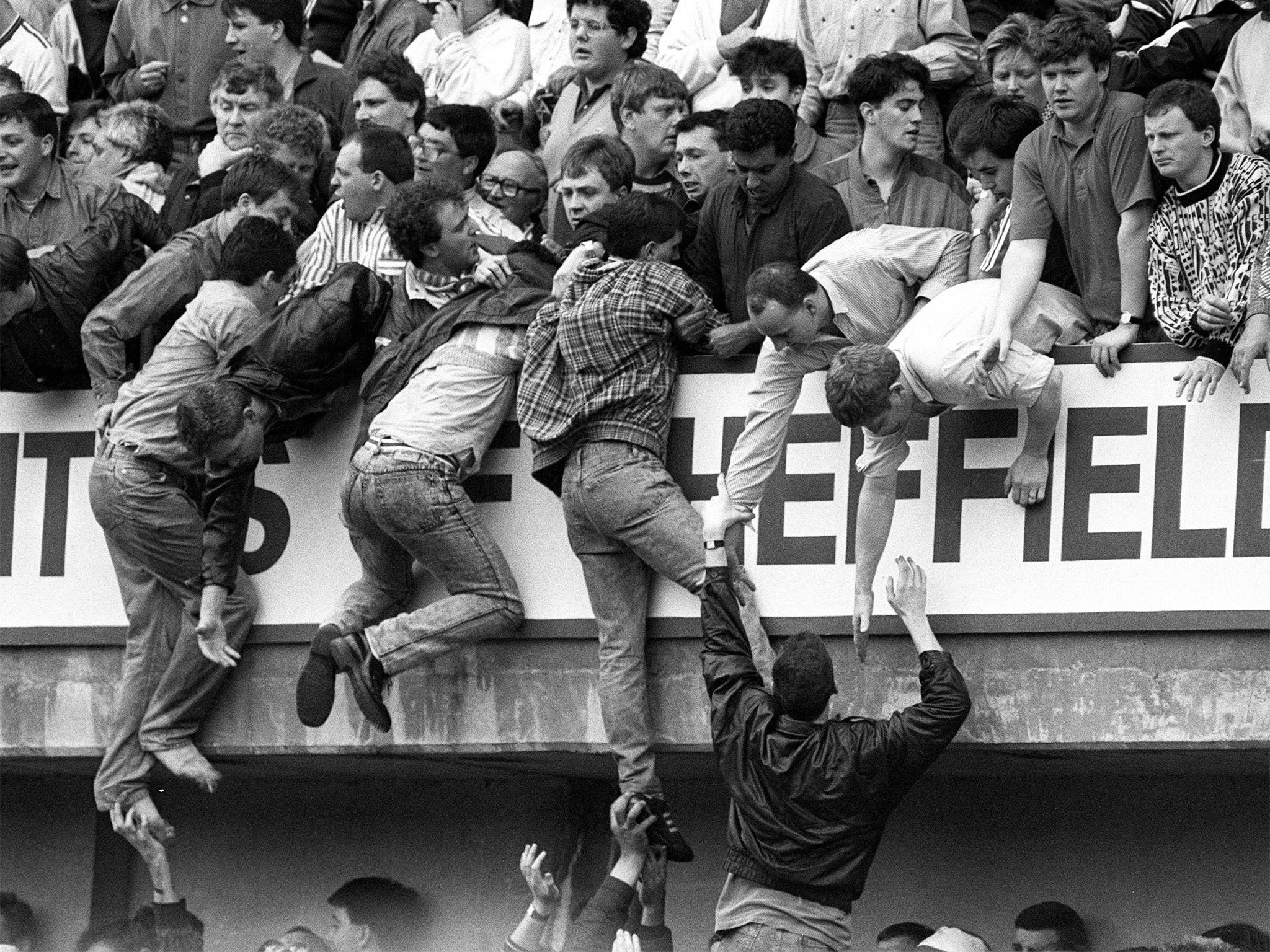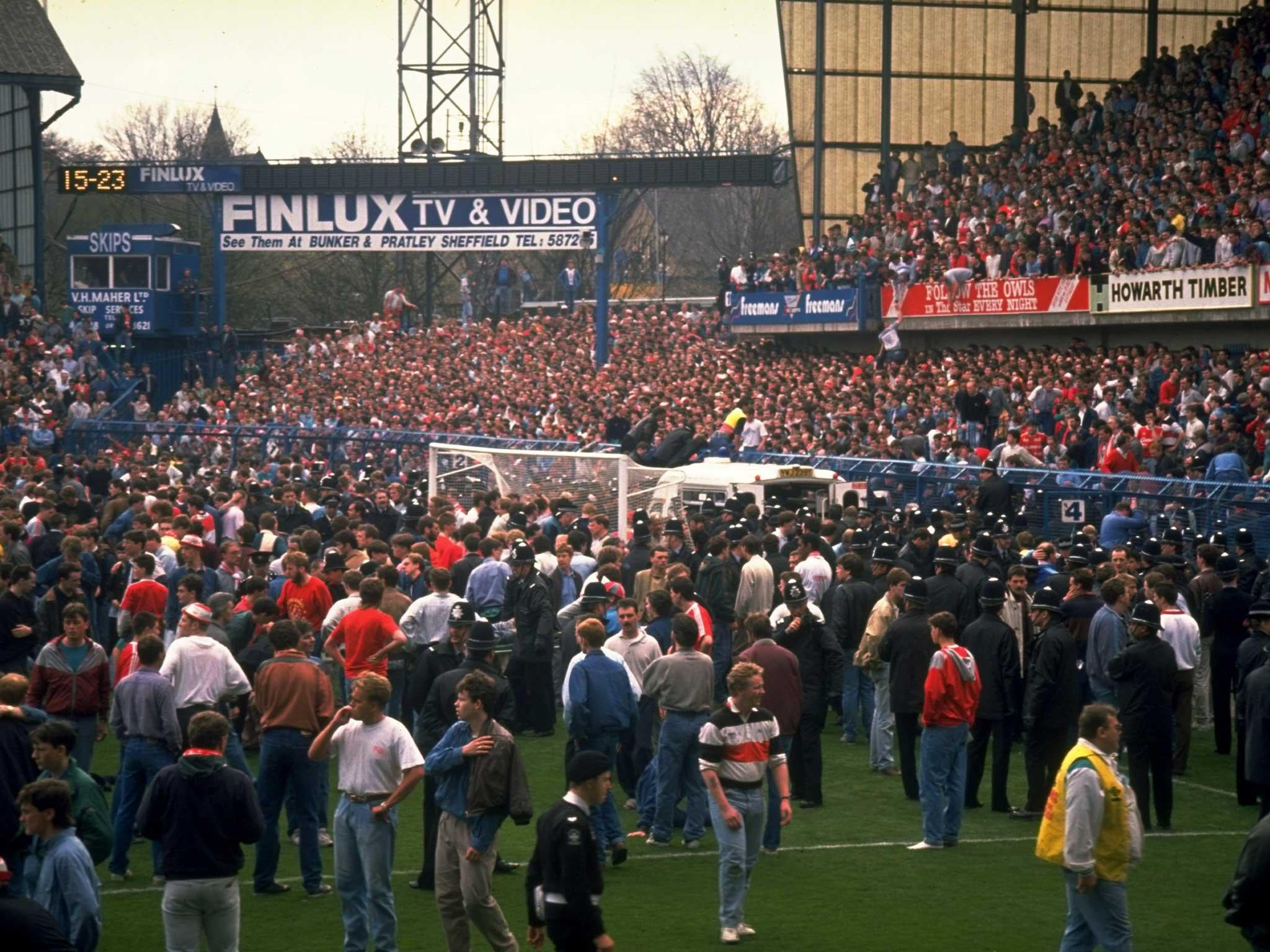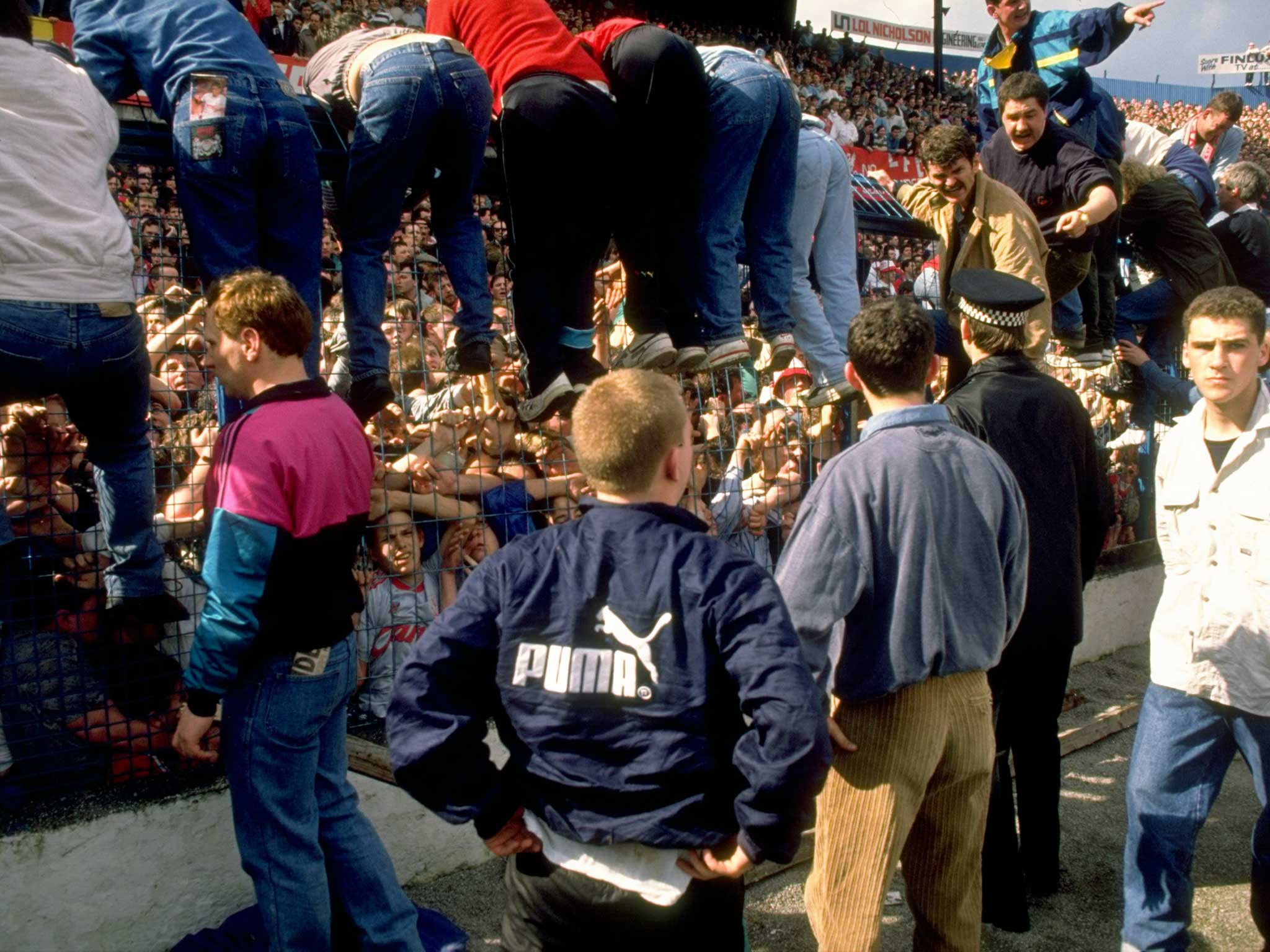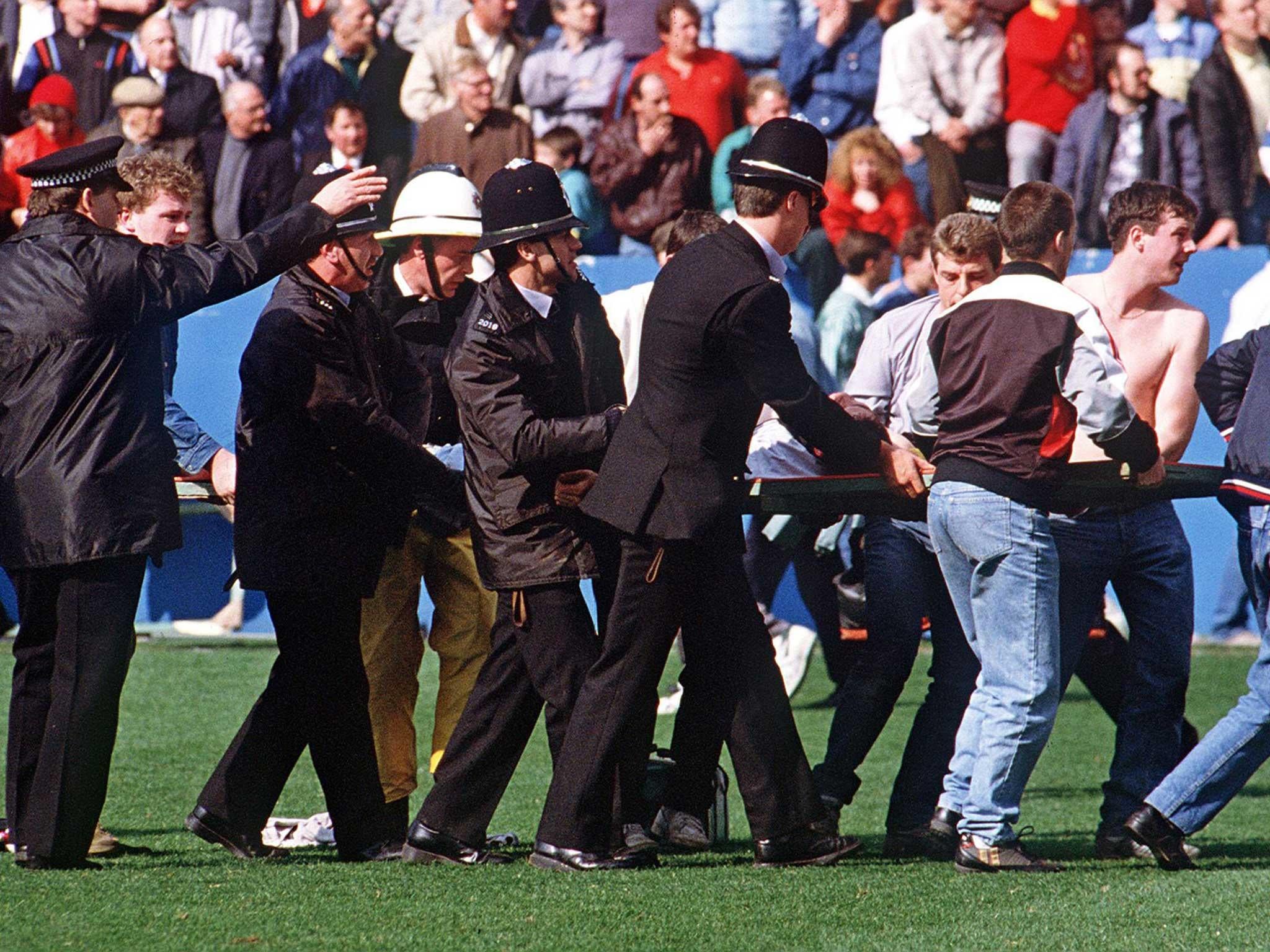Hillsborough inquest: The 14 questions jury answered to decide 96 were 'unlawfully killed'
Jurors were given a questionnaire to be completed as part of their decision

The Hillsborough inquest has found that the 96 people who died in Britain’s worst sporting disaster were unlawfully killed following numerous failings by police and match organisers.
The panel of six women and three men had to answer 14 key questions about events at the match between Liverpool and Nottingham Forest on 15 April 1989.
Unanimous decisions had already been made on every question apart from number six, which asks: "Are you satisfied, so that you are sure, that those who died in the disaster were unlawfully killed?"
Video: Hillsborough clips shown to jury
Jurors reached a majority decision on the issue, having been told they could only answer "yes" if they were sure that match commander Chief Superintendent David Duckenfield was in breach of a duty of care to those who died in the disaster.
The jury were told they needed to be satisfied that his breach of duty caused the deaths and that it amounted to "gross negligence".
Here are the 14 questions answered by the Hillsborough inquest:
1. Basic facts of the disaster
Do you agree with the following statement which is intended to summarise the basic facts of the disaster: “On April 15, 1989, 96 people died in the disaster at Hillsborough Stadium as a result of crushing in the central pens of the Leppings Lane terrace, following the admission of a large number of supporters to the stadium through exit gates.”
Answer - yes

2. Police planning
Was there any error or omission in police planning and preparation for the semi-final match on April 15, 1989, which caused or contributed to the dangerous situation that developed on the day of the match?
If your answer to the question above is “no”, please answer the following question: Was there any error or omission in police planning and preparation for the semi-final match which may have caused or contributed to the dangerous situation that developed on the day of the match?
Answer - yes
Explanation: “The jury feel that there were major omissions in the 1989 Operational Order including:
- specific instructions for managing the crowds outside the Leppings Lane turnstiles;
- specific instructions as to how the pens were to be filled and monitored;
- specific instructions as to who would be responsible for the monitoring of pens.
3. Policing of the match and the situation at the turnstiles
Was there any error or omission in policing on the day of the match which caused or contributed to a dangerous situation developing at the Leppings Lane turnstiles?
If your answer is “no”, please answer the following: Was there any error or omission in policing on the day of the match which may have caused or contributed to a dangerous situation developing at the Leppings Lane turnstiles?
Answer - yes
Explanation: “Police response to the increasing crowds at Leppings Lane was slow and un-coordinated. The road closure and sweep of fans exacerbated the situation. No filter cordons were placed in Leppings Lane. No contingency plans were made for the sudden arrival of a large number of fans. Attempts to close the perimeter gates were made too late.”
4. Policing of the match and the crush on the terrace
Was there any error or omission by commanding officers which caused or contributed to the crush on the terrace?
If your answer is “no”, please answer the following: Was there any error or omission by commanding officers which may have caused or contributed to the crush on the terrace?
Answer - yes
Explanation: “Commanding officers should have ordered the closure of the central tunnel before the opening of gate C was requested, as pens three and four were full. Commanding officers should have requested the number of fans still to enter the stadium after 2.30pm. Commanding officers failed to recognise that pens three and four were at capacity before gate C was opened. Commanding officers failed to order the closure of the tunnel as gate C was opened.”

5. The opening of the gates
When the order was given to open the exit gates at the Leppings Lane end of the stadium, was there any error or omission by the commanding officers in the control box which caused or contributed to the crush on the terrace?
If your answer is “no”, please answer the following: When the order was given to open the exit gates at the Leppings Lane end of the stadium, was there any error or omission by the commanding officers in the control box which may have caused or contributed to the crush on the terrace?
Answer - yes
Explanation: “Commanding officers did not inform officers in the inner concourse prior to the opening of gate C. Commanding officers failed to consider where the incoming fans would go. Commanding officers failed to order the closure of the central tunnel prior to the opening of gate C.”
6. Determination of unlawful killing issue
Are you satisfied, so that you are sure, that those who died in the disaster were unlawfully killed?
Answer - yes (by 7-2 majority)
7. Behaviour of the supporters
Was there any behaviour on the part of football supporters which caused or contributed to the dangerous situation at the Leppings Lane turnstiles?
Answer - no
If your answer is “no”, please answer the following: Was there any behaviour on the part of football supporters which may have caused or contributed to the dangerous situation at the Leppings Lane turnstiles?
Answer - no
If your answer to either of the questions above is “yes”, please answer the following: Was that behaviour unusual or unforeseeable?
8. Defects in Hillsborough Stadium
Were there any features of the design, construction and layout of the stadium which you consider were dangerous or defective and which caused or contributed to the disaster?
If your answer is “no”, please answer the following: Were there any features of the design, construction and layout of the stadium which you consider were dangerous or defective and which may have caused or contributed to the disaster?
Answer - yes
Explanation: “Design and layout of the crush barriers in pens three and four were not fully compliant with the Green Guide. The removal of barrier 144 and the partial removal of barrier 136 would have exacerbated the 'waterfall effect' of pressure towards the front of the pens. The lack of dedicated turnstiles for individual pens meant that capacities could not be monitored. There were too few turnstiles for a capacity crowd. Signage to the side pens was inadequate.”
9. Licensing and oversight of Hillsborough Stadium
Was there any error or omission in the safety certification and oversight of Hillsborough Stadium that caused or contributed to the disaster?
If your answer is “no”, please answer the following: Was there any error or omission in the safety certification and oversight of Hillsborough Stadium that may have caused or contributed to the disaster?
Answer - yes
Explanation: “The Safety Certificate was never amended to reflect the changes at the Leppings Lane end of the stadium, therefore capacity figures were never updated. The capacity figures for the Leppings Lane terraces were incorrectly calculated when the Safety Certificate was first issued. The Safety Certificate had not been reissued since 1986.”
10. Conduct of Sheffield Wednesday FC before the day of the match
Was there any error or omission by Sheffield Wednesday FC (and its staff) in the management of the stadium and/or preparation for the match which caused or contributed to the dangerous situation that developed on the day of the match?
If your answer is “no”, please answer the following: Was there any error or omission by Sheffield Wednesday FC (and its staff) in the management of the stadium and/or preparation for the match which may have caused or contributed to the dangerous situation that developed on the day of the match?
Answer - yes
Explanation: “The Club did not approve the plans for dedicated turnstiles for each pen. The Club did not agree any contingency plans with the police. There was inadequate signage and inaccurate/misleading information on the semi-final tickets.”

11. Conduct of Sheffield Wednesday FC on the day of the match
Was there any error or omission by Sheffield Wednesday FC (and its staff) on April 15, 1989, which caused or contributed to the dangerous situation that developed at the Leppings Lane turnstiles and in the west terrace?
Answer - no
If your answer is “no”, please answer the following: Was there any error or omission by Sheffield Wednesday FC (and its staff) on April 15, 1989, which may have caused or contributed to the dangerous situation that developed at the Leppings Lane turnstiles and in the west terrace?
Answer - yes
Explanation: “Club officials were aware of the huge numbers of fans still outside the Leppings Lane turnstiles at 2.40pm. They should have requested a delayed kick-off at this point.”
12. Conduct of Eastwood & Partners
Should Eastwood & Partners have done more to detect and advise on any unsafe or unsatisfactory features of Hillsborough Stadium which caused or contributed to the disaster?
If your answer is “no”, please answer the following: Should Eastwood & Partners have done more to detect and advise on any unsafe or unsatisfactory features of Hillsborough Stadium which may have caused or contributed to the disaster?
Answer - yes
Explanation: “Eastwoods (sic) did not make their own calculations when they became consultants for SWFC, therefore the initial capacity figures and all subsequent calculations were incorrect. Eastwoods failed to re-calculate capacity figures each time changes were made to the terraces. Eastwoods failed to update the Safety Certificate after 1986. Eastwoods failed to recognise that the removal of barrier 144 and the partial removal of barrier 136 could result in a dangerous situation in the pens.”
13. Emergency response and the role of the South Yorkshire Police
After the crush in the west terrace had begun to develop, was there any error or omission by the police which caused or contributed to the loss of lives in the disaster?
If your answer is “no”, please answer the following: After the crush in the west terrace had begun to develop, was there any error or omission by the police which may have caused or contributed to the loss of lives in the disaster?
Answer - yes
Explanation: “The police delayed calling a Major Incident, so the appropriate emergency responses were delayed. There was a lack of co-ordination, communication, command and control which delayed or prevented appropriate responses.”

14. Emergency response and the role of the South Yorkshire Metropolitan Ambulance Service
After the crush in the west terrace had begun to develop, was there any error or omission by the ambulance service which caused or contributed to the loss of lives in the disaster?
If your answer is “no”, please answer the following: After the crush in the west terrace had begun to develop, was there any error or omission by the ambulance service which may have caused or contributed to the loss of lives in the disaster?
Answer - yes
Explanation: “SYMAS officers at the scene failed to ascertain the nature of the problem at Leppings Lane. The failure to recognise and call a Major Incident led to delays in responses to the emergency.”
Jurors were also asked to complete individual questionnaires for each of the 96 people who died, recording the medical cause and time of death.
Inquest hearings continued for more than two years, with the jury having heard evidence from around 1,000 witnesses in a specially built courtroom in Warrington.
The Hillsborough disaster unfolded during Liverpool's FA Cup semi-final tie against Nottingham Forest as thousands of fans were crushed on Sheffield Wednesday's Leppings Lane terrace.
Accidental deaths verdicts from the original inquests were quashed following the 2012 Hillsborough Independent Panel report after a long campaign by the families of the dead.
Additional reporting by PA
Subscribe to Independent Premium to bookmark this article
Want to bookmark your favourite articles and stories to read or reference later? Start your Independent Premium subscription today.
